

Unclaimed: Are are working at Strapi ?
Strapi Reviews & Product Details
Strapi is a free, open-source, and headless/back-end-only CMS that runs on 100% Javascript. Made for developers, it’s fully customizable and provides a robust environment for creating self-hosted and high-performing content APIs. Content creators can easily define models to build rich layouts depending on the data structure they need for their business. Once a content architecture has been set, it’s seamless to write, edit, and manage any content type. Comprehensive frameworks and services from third-party vendors are available to reinforce the content environment and once ready, content can be easily deployed on all cloud platforms or traditional servers.

( 1 )
| Capabilities |
|
|---|---|
| Segment |
|
| Deployment | Cloud / SaaS / Web-Based, Desktop Linux, Desktop Mac, Desktop Windows, On-Premise Linux, On-Premise Windows |
| Support | 24/7 (Live rep), Chat, Email/Help Desk, FAQs/Forum, Knowledge Base, Phone Support |
| Training | Documentation |
| Languages | English |

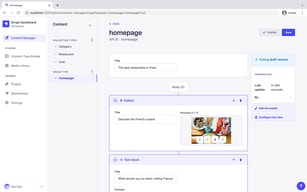
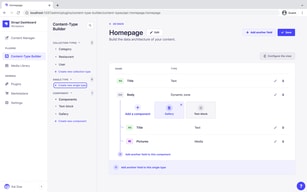
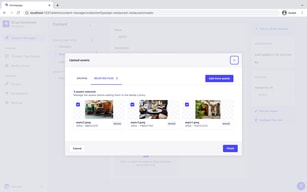
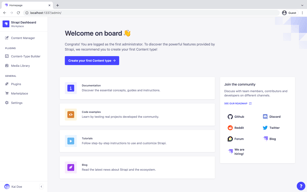
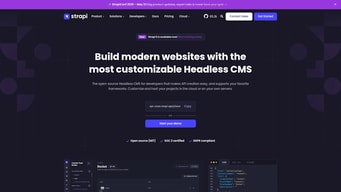
Compare Strapi with other popular tools in the same category.

I love that you can basically use this with almost any platform in the industry. It can be used with ReactJs, AngularJS, and even plain Javascript. It's amazing
I think that there are not enough courses and options for those who would like to learn the CMS; even if it is offered as a paid certification, that would be great!
I am solving the problem that you do not need WordPress to create and compete in creating great web applications. It is a new edge to all developers independent and employed.
Customazibility, written in React and javascript
Sometimes there can be bugs that are not easy to resolve nor debug.
Open source CMS
Most of Strapi is funny. The way things just connect and can be shared through API, user configurations, and management is fantastic.
The only thing I feel left in Strapi is a good WYSIWYG editor because most of the users who can access the app are non-technical.
We are migrating our webpage to Strapi. Non-technical users will be the admins of it
- There is an Admin Panel for defining data and managing data. - The defined data will automatically generate API and API files for front-end use. - You can still do back-end development and customization by yourself. - It is an open-source project, and you can easily put it on your own server using docker. - Lots of plugins we can choose from the community.
The documentation is not enough clear. I used more time to find out how to customize the backend and change the configs. Nothing major but could be improved.
I used it to set up a freelance project with some articles, pages, and a few other content types. It was very easy to set up with just some fingertips. The data types defined in the Admin Panel are all stored in JSON format, so they can be managed by the version control system.
One of the main reasons that made us choose to keep our content management focused on Strapi is definitely their clear documentation and the fact that it is written entirely in JavaScript. There's a huge community, the CMS is fast and they are very concerned about every development step, from coding until deploying.
The only thing that I don't like so much is that they are not (yet) fully supported TypeScript. With TypeScript support, our dev experience would definitely set the bar higher.
One of our biggest goals was to manage content in such a way that some users have the capability to change only a specific set of content, having custom access roles assigned to different users. Strapi has a nice and easy way to manage that, by giving us the ability to create and manage custom roles.
we can easy to creating API to Fetch the backend
Download Package is to big, and update exiting version strapi always failed
creating component for multi content, fetch in frontend
Stability, performance, ease of use, easy to upgrade and modify even after production
Dashboard customization is very limited, few plug ins
Bulding, modify apps very quickly, and it can handle complex project without hassle
Strapi is easy to integrate with NextJs which is my preferred React Framework. It works well with Next Auth giving me a seamless way to authenticate users on my website.
There was a steep learning curve when I was starting, but now there are many tutorials to help you get started.
Backend development. As a frontend developer, I don't have to master any backend programming languages. Strapi has made it easy for me to have a backend while I concentrate on the frontend
Almost all the basic notions found in the development of backend solutions are implemented in Click&Play. Combined with the efficient and straightforward interface, this saves a lot of time developing short and medium-term solutions.
Restricted access can quickly become restrictive, but it is part of the business model of the company.
Strapi allowed me to create POC on different themes: retail, augmented reality, incentive,...
The plugin system. That empowers me to customize the admin panel for my needs.
I like everything about strapi.I wish there is a template for plugin system.
I'm creating an email and cotent management backend. Strapi helps me manage the users, create email templates and cron jobs. The clear structure of Strapi enables me to add features easily.





